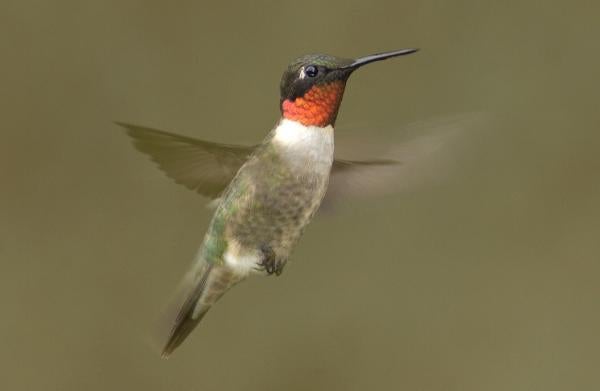
Xplor reconnects kids to nature and helps them find adventure in their own backyard. Free to residents of Missouri.


































Stay in Touch with MDC news, newsletters, events, and manage your subscription

Xplor reconnects kids to nature and helps them find adventure in their own backyard. Free to residents of Missouri.

A monthly publication about conservation in Missouri. Started in 1938, the printed magazine is free to residents of Missouri.


JEFFERSON CITY, Mo. – The Missouri Department of Conservation (MDC) encourages people to discover nature this spring by learning about the ruby-throated hummingbird. Missourians will be seeing this delightful bird this time of year a lot more now due to migration. In an average year, ruby-throated hummingbirds arrive in Missouri around early to mid-April.
“Hummingbird migration all depends on the weather,” MDC Wildlife Ecologist Brad Jacobs said. “This year’s migration should be about average for hummingbirds and they should be increasing in numbers over the month of April.”
Jacobs noted a great website map from hummingbirds.net to visit to see when and where hummingbirds are migrating: http://bit.ly/1cCTWae. The hummingbird migration map shows locations of where ruby-throated hummingbirds have been spotted already this year in North America. The website allows visitors to help out with this by entering the dates and exact locations where people have spotted hummingbirds.
Just like most birds, hummingbirds typically migrate south in early fall and migrate back north in the spring.
“Our hummingbirds begin their southward migration in mid-August and most are gone by early October,” Jacobs said. “A few overwinter in extreme southern coastal states, with most wintering from southern Mexico to Costa Rica. Migration means some of them fly nonstop for 600 miles from the Gulf coast of the U.S. to the Yucatan Peninsula over the Gulf of Mexico. The often lose half their body weight during this trans-Gulf, 24-hour flight.”
Early spring migrant hummingbirds in Missouri rely on sap oozing from sapsucker-drilled holes and insects for food. With warmer weather they soon will switch to eating nectar from many different kinds of flowers later in spring, which gives them energy needed to catch insects all day long to feed their young.
Hummingbirds are more than just a delight to watch flying around, they also play a very important part in our ecosystem.
“Hummingbirds are important pollinators for many species of plants that require just such a long-billed pollinator,” Jacobs said. “Because of their small size, hummingbirds also risk ending up as food for many predators such as, large insects, spiders, birds, and frogs.”
Hummingbirds are summer residents throughout the state either around nectar feeders outside homes and in parks and gardens. Hummingbirds nest in wooded areas, and are frequently observed near forests, and streams. Learn more about the ruby-throated hummingbird from MDC’s Field Guide at http://on.mo.gov/1q0h7To.
To see video of the hummingbirds visit MDC’s website at http://on.mo.gov/1UGKR4U.